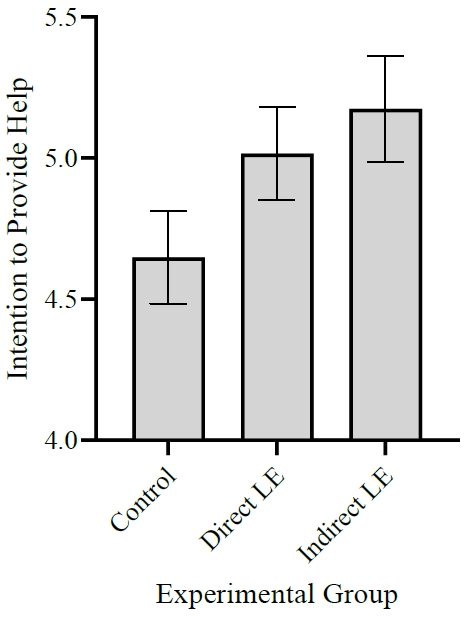Arendt, F., Scherr, S., Niederkrotenthaler, T., Krallmann, S., & Till, B. (2018). Effects of awareness material on suicide-related knowledge and the intention to provide adequate help to suicidal individuals.
Crisis: The Journal of Crisis Intervention and Suicide Prevention,
39(1), 47.
https://doi.org/10.1027/0227-5910/a000474

Braverman, J. (2008). Testimonials versus informational persuasives messages. The moderating effect of delivery mode and personal involvement.
Communication Research,
35(5), 666-694.
https://doi.org/10.1177/0093650208321785

Cheesmond, N., Davies, K., & Inder, K. J. (2020). The role of the peer support worker in increasing rural mental health help-seeking.
Australian Journal of Rural Health,
28(2), 203-208.
https://doi.org/10.111/ajr.12603


D├Čring, N. (2013). Wie Medienpersonen Emotionen und Selbstkonzept der Mediennutzer beeinflussen. In: Schweiger, W., & Fahr, A. (Ed.). Handbuch Medienwirkungsforschung. Wiesbaden: Springer VS. 295-310.
https://doi.org/10.1007/978-3-531-18967-3_15
Fahr, A., & Ort, A. (2019). Die Bedeutung sozialer Vergleichsprozesse f├╝r die Gesundheitskommunikation. In: Rossmann, C., & Hastall, M. R. (Ed.). Handbuch der Gesundheitskommunikation. Kommunikationswissenschaftliche Perspektive. Wiesbaden. Springer VS. 269-280.
https://doi.org/10.1007/978-3-658-10727-7_21
Festinger, L. (1954). A theory of social comparison processes.
Human Relations,
7(2), 117-140.


Ford, L. H., & Rubin, B. M. (1970). A social desirability questionnaire for young children.
Journal of Consulting and Clinical Psychology,
35(2), 195-204.
https://doi.org/10.1037/h0030042

Gilbert, P., & Stickley, T. (2012). ŌĆ£Wounded HealersŌĆØ: The role of lived experience in mental health education and practice.
The Journal of Mental Health Training, Education and Practice,
7(1), 33-41.
https://doi.org/10.1108/17556221211230570

Harris, J. I., Leskela, J., & Hoffmann-Konn, L. (2016). Provider lived experience and stigma.
American Journal of Orthopsychiatry,
86(6), 604-609.
https://doi.org/10.1037/ort0000179


King, A. J., Brophy, L. M., Fortune, T. L., & Bryne, L. (2020). Factors affecting mental health professionalsŌĆÖ sharing of their lived experience in the workplace: A scoping review.
Psychiatric Services,
71(10), 1047-1064.
https://doi.org/10.1176/appi.ps.201900606


Krotz, F. (2001): Die Mediatisierung kommunikativen Handelns. Der Wandel von Alltag und sozialen Beziehungen, Kultur und Gesellschaft durch die Medien [The mediatization of communicative action. The change of everyday life and social relationships, culture and society through the media]. Westdt. Verlag
Leask, J., Hooker, C., & King, C. (2010). Media coverage of health issues and how to work more effectively with journalists. A qualitative study.
BMC Public Health,
10(1), 1-7.
https://doi.org/10.1186/1471-2458-10-535



Leiner, D. J. (2014). Convenience samples from online respondent pools: A case studz on the SoSci Panel. International Journal of Internet Science, 20(5), 1-18.
National Action Alliance for Suicide Prevention; Suicide Attempt Survivors Task Force (2014). The Way Forward: Pathways to Hope, Recovery, and Wellness with Insights from Lived Experiences. National Action Alliance for Suicide Prevention
Niederkrotenthaler, T., & Till, B. (2020). Effects of suicide awareness materials on individuals with recent suicidal ideation or attempt. Online randomised controlled trial.
The British Journal of Psychiatry,
217(6), 693-700.
https://doi.org/10.1192/bjp.2019.259


Nowotny, M., Kern, D., Breyer, E., Bengough, T., & Griebler, R. (2019). Depressionsbericht O╠łsterreich. Eine interdisziplina╠łre und multiperspektivische Bestandsaufnahme. Bundesministerium fu╠łr Arbeit, Soziales, Gesundheit und Konsumentenschutz [Depression report Austria. An interdisciplinary and multi-perspective inventory. Federal Ministry of Labour, Social Affairs, Health and Consumer Protection]. BMASGK
Scherr, S. (2016). Depression-Medien-Suizid. Zur empirischen Relevanz von Depressionen und Medien fu╠łr die Suizidalita╠łt. [Depression-Media-Suicide. On the empirical relevance of depression and media for suicidality]. Springer VS
Scherr, S., Arendt, F., Prieler, M., & Ju, Y. (2020). Investigating the negative-cognitive-triad-hypothesis of news choice in Germany and South Korea. Does depression predict selective exposure to negative news?
The Social Science Journal, 1-18.
https://doi.org/10.1080/03623319.2020.1859817

Sprung, B.R., Janotha, B. L., & Steckel, A. J. (2011). The lived experience of breast cancer patients and couple distress.
Journal of the American Academy of Nurse Practitioners,
23(11), 619-627.
https://doi.org/10.1111/j.1745-7599.2011.00653.x


Reingle Gonzalez, J. M., Rana, R. E., Jetelina, K. K., & Roberts, M. H. (2019). The value of lived experience with the criminal justice system. A qualitative study of peer re-entry specialists.
International Journal of Offender Therapy and Comparative Criminology,
63(10), 1861-1875.
https://doi.org/10.1177/0306624X19830596


Tay, S., Alcock, K., & Scior, K. (2018). Mental health problems among clinical psychologists. Stigma and its impact on disclosure and help-seeking.
Journal of Clinical Psychology,
74(9), 1545-1555.
https://doi.org/10.1002/jclp.22614


Till, B., Arendt, F., Scherr, S., & Niederkrotenthaler, T. (2019). Effects of educative suicide-prevention news articles featuring experts with vs. without personal experience of suicidal ideation. A randomized controlled trial of the Papageno effect.
The Journal of Clinical Psychiatry,
80(1), 17m11975.
https://doi.org/10.4088/JCP.17m11975

Wasserman, D. (2011): Depression. Oxford University Press
World Health Organization (2021): Fact Sheet: Depression
Zhao, Y., & Zhang, J. (2017). Consumer health information seeking in social media. A literature review.
Health Information & Libraries Journal,
34(4), 268-283.
https://doi.org/10.1111/hir.121925


